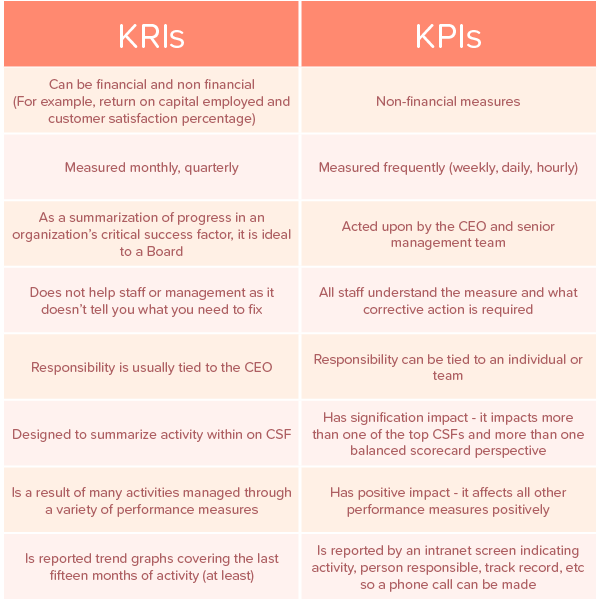Most people are familiar with Key Performance Indicators (KPI), especially within the contact center and customer service space. Key Result Indicators (KRI) are less known, but equally important to your business. Learn more about the differences between these indicators below, and how can you combine them for more effective contact center management.
KPI and KRI Defined
KPIs measure long-term performance, helping you achieve specific objectives in the future. For example, call center and contact center KPIs help determine if teams are meeting their agent performance goals and delivering exceptional customer service.
Examples of contact center KPIs include:
- Average Handle Time (AHT)
- First Contact Resolution (FCR)
- Average Wait Time (AWT)
- Service Level
- Abandonment Rate
You use KPIs to monitor various areas of your contact center and make more accurate predictions. KRIs measure an outcome that has already happened. They are business outcome-based measurements. For example, reviewing revenue would be considered a KRI. This is because you would look at a number that comprises aggregate data from the past. In fact, most financial metrics are KRIs. It may also surprise you to learn that many of the metrics you think of as KPIs are actually KRIs.
Here are some examples of KRIs:
- Net/gross profits
- Profits as a percentage of revenue
- Number of sales calls executed in the previous week
- Number of customer complaints in the previous month
- Conversion rates
- Canceled subscriptions
What Is the Difference Between Contact Center KPIs and KRIs?
The basic difference is this: KRIs are trailing indicators.
Meaning you’re looking at something that has already happened and measuring it then. Properly presented, KRIs can be precious sources of information for deciding within your company.
KRIs are:
- Financial metrics – actually, almost all financial metrics are actually KRIs
- Customer metrics – such as customer satisfaction or profitability
- Other metrics – as long as they cover longer periods of time, such as quarters or years
The great thing about KRIs is that they measure previous events so you can make better decisions in the present. KPIs are a little different. They are leading or forward-looking indicators and are strategic. These individual metrics measure the direct results of strategic decisions at the executive level as to the overall direction of the organization.
While most companies in any industry may find a similar set of KRIs useful in a dashboard, almost every individual company (even within the same industry) will have a completely different set of KPIs depending on their performance or customer experience strategy.
KPIs can greatly benefit your contact center. However, ignoring KRIs — or thinking KRIs are KPIs — will prevent your business from growing. These metrics unlock insights about the events that have already happened, helping you learn how your call center operates.
The chart below does a great job of comparing apples-to-apples on KPIs and KRIs. Inspired by the site Strategy Driven, the chart below helps compare apples-to-apples on KPIs and KRIs. (Click on the chart to dig deeper on their comparison.)

Combining Call Center KPIs With KRIs
KRIs are just as valuable as KPIs. Using both types of indicators in your contact center will let you examine previous results to execute more successful actions in the future. KRIs and KPIs will give you insights into your achievements, and also help you progress toward an intended outcome.
It’s important to understand the similarities and differences between KPIs and KRIs when incorporating them into your data analysis. Both metrics measure events at regular intervals, whether that’s daily, weekly, monthly, etc. However, KRIs give a snapshot of a result, while KPIs give a snapshot of an action or activity. That’s why combining both metrics provides you with a 360-degree overview of your contact center. Using KRIs or KPIs alone won’t generate the insights you deserve.
KPI and KRI Tips
Here are some additional tips to get more value from KPIs and KRIs:
- Choose KPIs and KRIs that align with your organization’s goals. If you want to improve revenue, track metrics such as net revenue, gross revenue, and gross profit. If you want to improve customer service, make metrics like average handling time, customer complaints, shipping times, and conversion rates the focus of your strategy.
- Don’t measure too many metrics. Tracking a large variety of metrics in your contact center can complicate things for team members and take up time and resources. Concentrate on a handful of KPIs and KRIs that align with your goals and use these to guide your data analysis processes. These metrics should generate data insights that drive results and improve decision-making in your business.
- Tweak metrics to suit your business goals. If other contact centers measure revenue in yearly intervals, but monthly intervals make more sense for your company, choose the latter.
- Review metrics regularly to see whether they generate the data you require. There’s no point in tracking a metric if it provides few insights or takes up too many resources. Your KPIs and KRIs shouldn’t be set in stone.
Find Success With KPIs
Finally, it is critical that leadership teams (in call centers and beyond) have a thorough understanding of how they fit into the strategic puzzle and the corrective action to take if their organization’s KPIs are not on track for success.
Looking for a quick, practical way to get your team on track with your customer engagement KPIs that feed into your KRIs?
Learn more about how Brightmetrics™ can help your organization identify the best KPIs to measure in your contact center.




